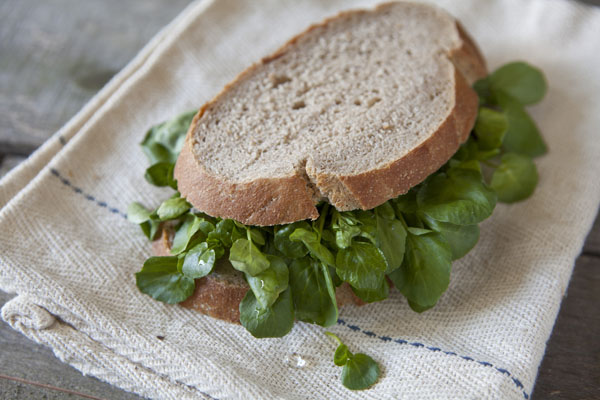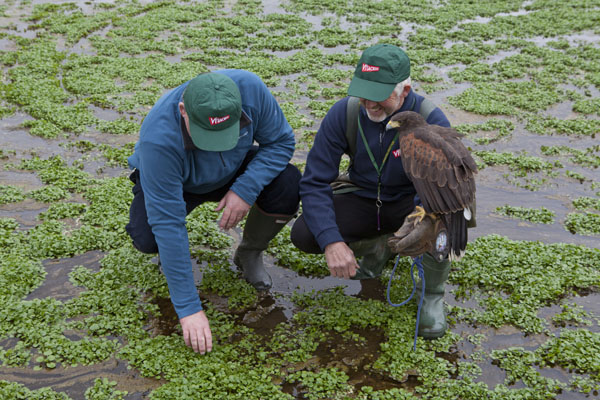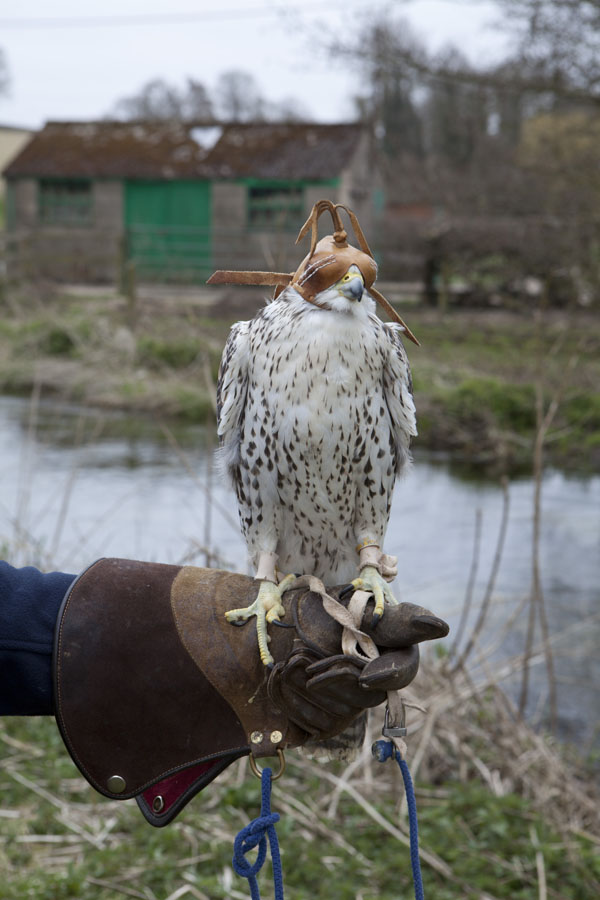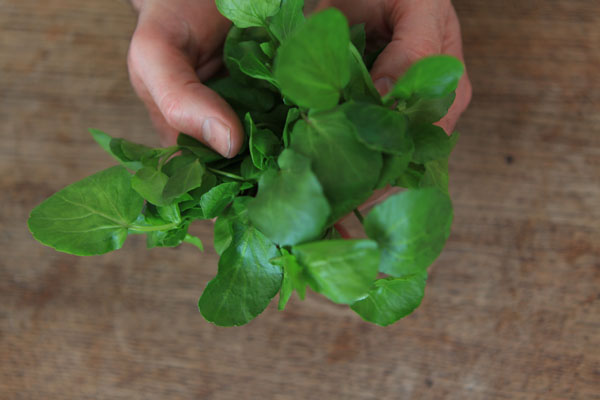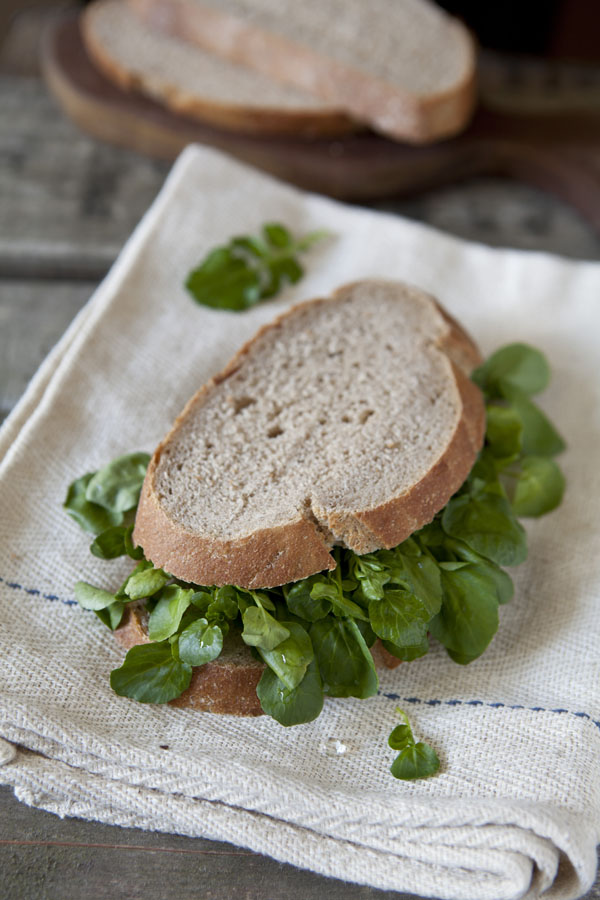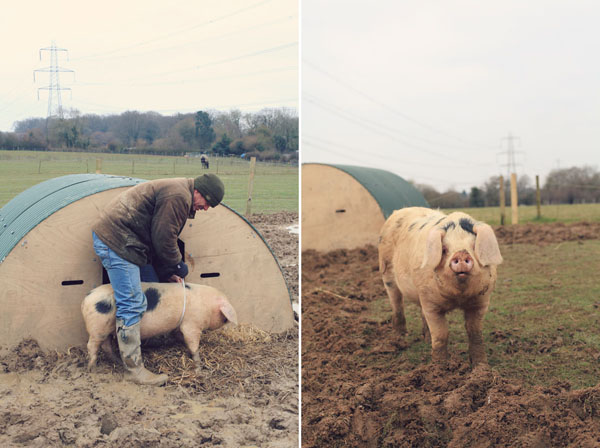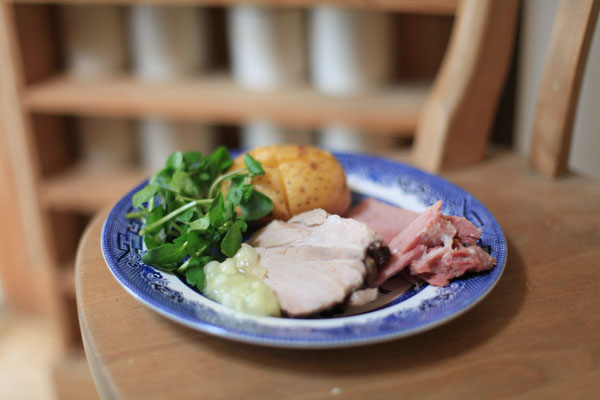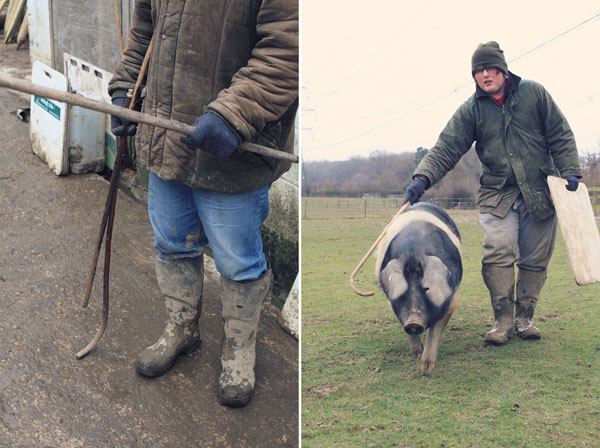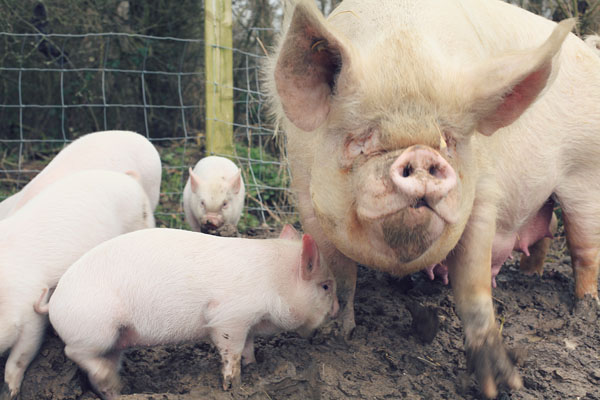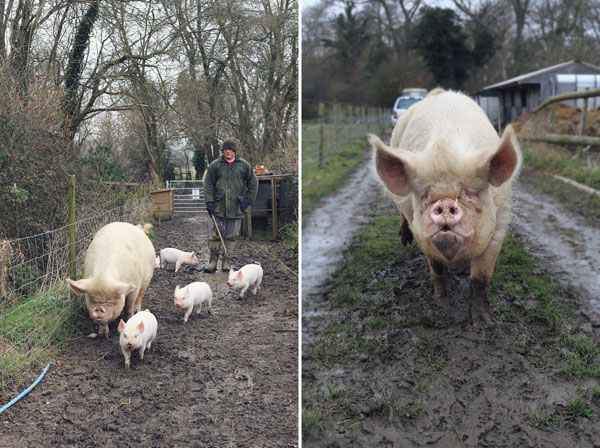The post How free range is your bacon? appeared first on Miss Foodwise.
]]>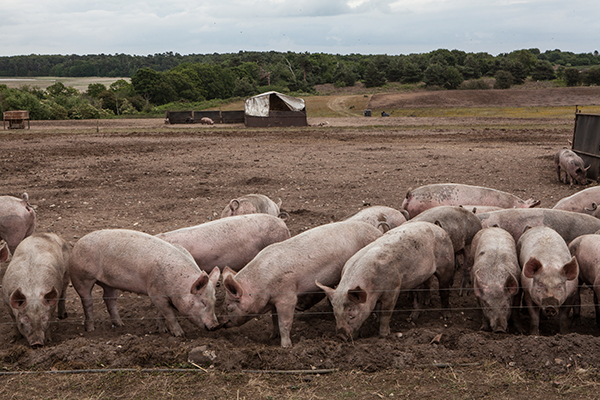 |
| kisses on the free range fields |
It came as a bit of a surprise to me that less than 3% of the pork in the UK is actually truly ‘free range’. You think if you choose for the ‘freedom foods’ or ‘red tractor’ label, you’re sorted, but no, that doesn’t mean your bacon is free range at all.
To learn more, I ventured out to sunny Suffolk to meet up with second generation pig farmer Alastair Butler on their family farm Blythburgh Free Range Pork.
As it turnes out, a lot of the pork we think to be free-range, has actually not had a better life than a pig in an intensive farm. We assume when we spot the label ‘outdoor bred’ or ‘outdoor reared’ that it is free-range, only it isn’t.
First we have to understand how pig farming works.
There are two stages or herds, the ‘breeding herd’ – these are the sows and the newly born piglets, and the ‘finishing herd’ where the piglets go after they are weaned which is after about four weeks of age.
In the majority of the higher welfare farms, the high welfare terminology only applies to the first herd, the sows and their babies.
Outdoor bred and outdoor reared is NOT free range pork.
Outdoor bred: this means the breeding herd is kept free range but the after the piglets are weaned, they are moved indoors to the finishing herd where they are intensively reared. The pork from these pigs will not be any different from your average intensive farm.
Outdoor reared: here the breeding herd is free range too, and the finishing herd is kept in a semi outdoor arrangement of tents or huts. The pigs do not have free access to the outside, and are confined to these huts and tents at all times. Alastair refers to this arrangement as ‘intensively reared outdoors.’
Free range: here the breeding herd is free range, and the finishing herd is kept in an even larger free range space. This is the only true higher welfare farming system.
Blythburgh is one of the largest free range farms in the UK, this means that the pigs have an incredibly large amount of land to roam freely. The animals grow slower, which means the fat has been around the muscle for longer and therefore delivers more flavour.
But for Alastair the welfare of the pigs is what’s most important, he steps into the field with his dad and nearly all of the pigs in the field come storming towards him to see what is going on and have a sniff on the farmers leg and shoes. “This is what it’s all about” he says “pigs showing their natural behaviour which is that they are incredibly curious and clever animals”.
I asked him if he is still smitten with the breeding herd after years of seeing piglets being born, and he tells me that he still loves everything about the breeding herd, but the fact that they have to keep the sows on a more confined paddock means he prefers to visit the finishing herd which looks to me like a gang of friends having a nice play in the sand rather than a bunch of farm animals being finished for slaughter.
The natural behaviour of a pig is to root in the soil and eat the mud, they love a good dust bath or wallow in the muddy pools and enjoy a good run. Imagine if you would place an animal like this on a concrete floor, with no light apart from a couple of industrial lights if they are lucky. No fresh air, nothing. Farrowing crates contain the sows, they are so tight that they can not turn, they can not stand, they just have to lie there. Piglets are taken from these animals after birth, while pigs are known for being good mothers, imagine what the animal must be feeling. And that is what is important, we can’t ignore that animals have feelings. Farm animals are no different from pets. It is important to take a stand against intensive farming, and eat less meat, but choose to buy high welfare meat.
Ask your butcher where the meat comes from, investigate by looking up the farms website to see that you are getting your money’s worth in free range meat.
There is no room in this day and age for animal abuse, so find a free range source for your meat.
From farm to plate
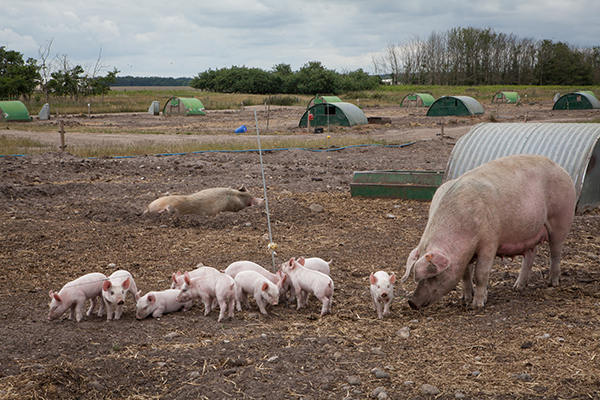 |
| The breeding herd |
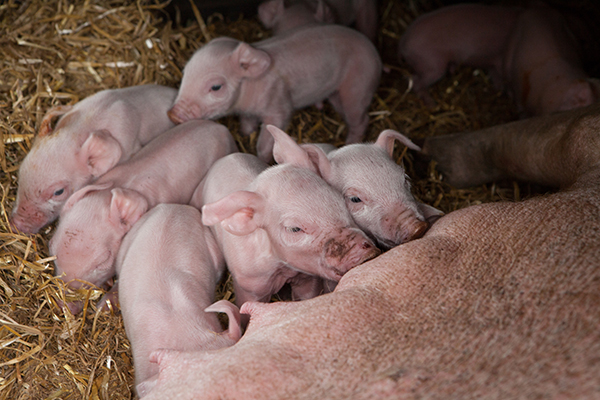 |
| A happy mama and her babies fighting over the best teat |
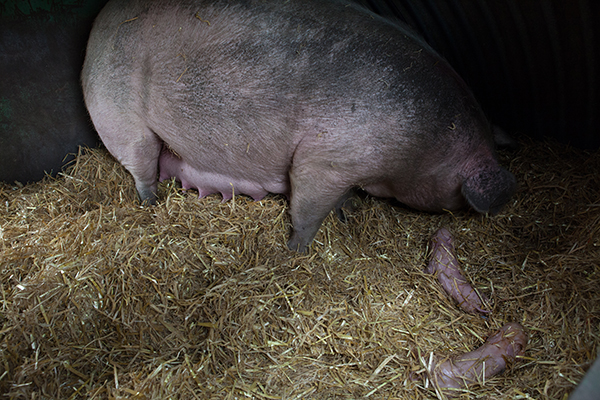 |
| And suddenly another mama started farrowing, she covered her piglets in straw to keep warm |
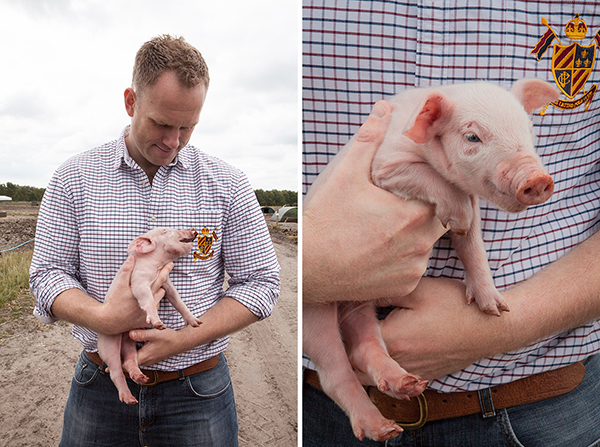 |
| Alastair Butler and his piglets. I got to hold her too, she fell asleep on me. |
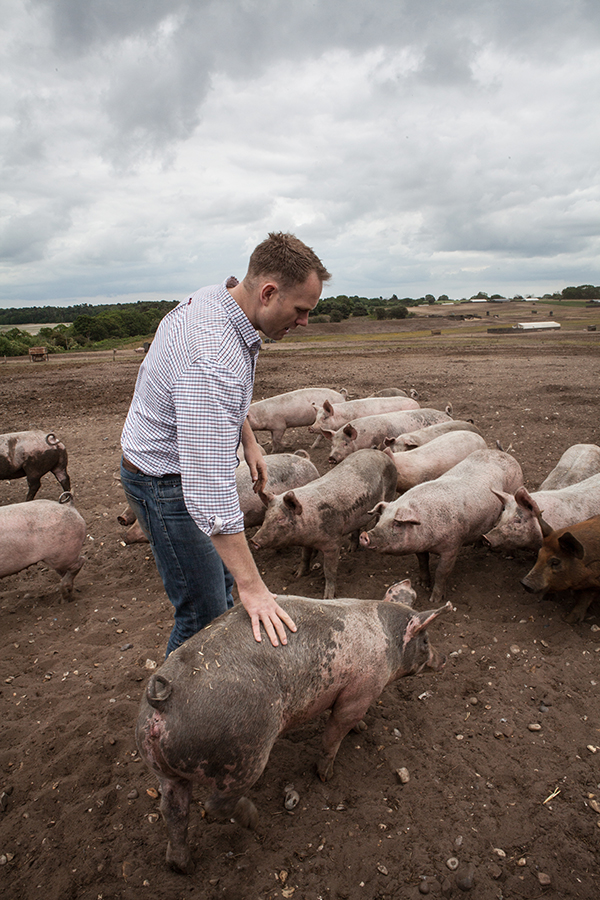 |
| A curious bunch – the finishing herd. |
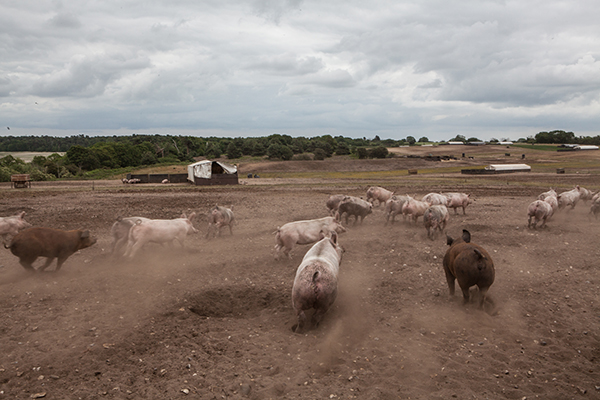 |
| Didn’t I say they love a good run? |
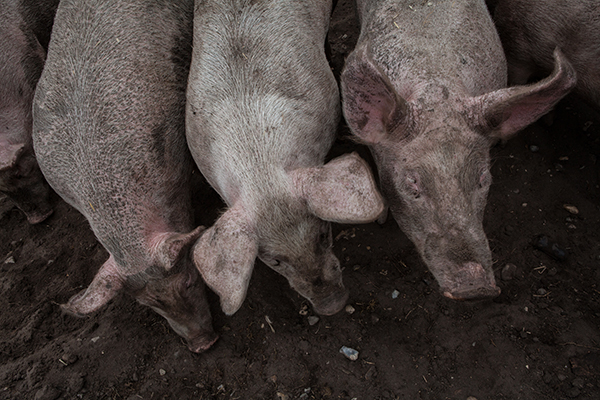 |
| And that they love to eat and root around the mud? |
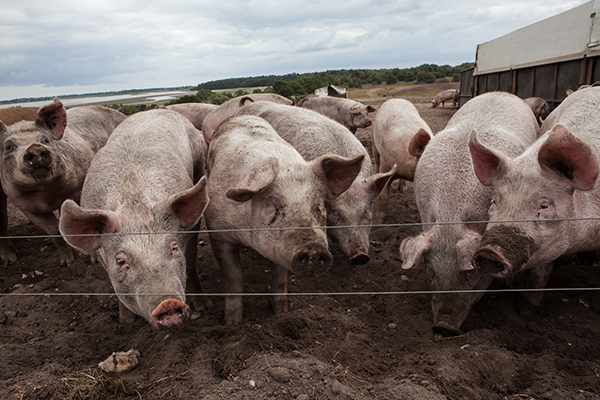 |
| Are you looking at me? Well you’re looking at us human! |
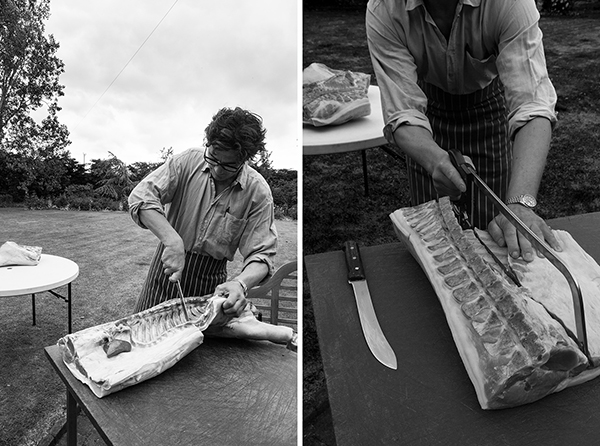 |
| Slaughtered and butchered by Gerard King. |
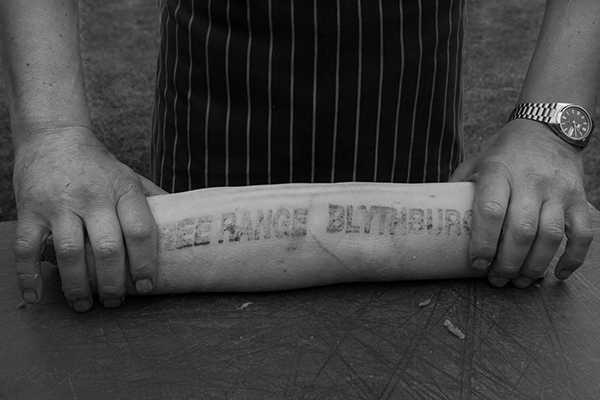 |
| The mark, so you know what you get. |
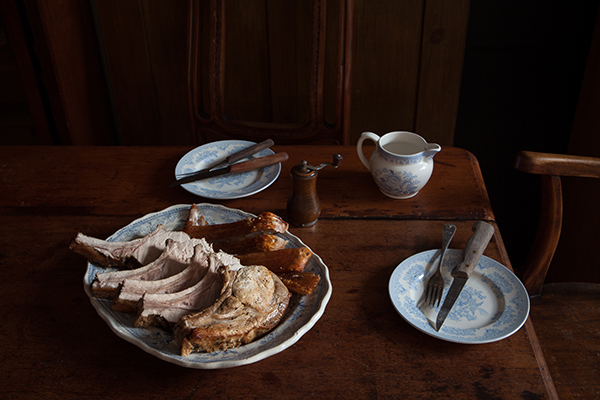 |
| The final stage – the table. |
Thank you very much for inviting me to your family farm Alastair, and for the beautiful pulled pork lunch your mother made us. Thanks Gerard King from craft butcher Salter and King for a butchery demonstration to round up the day and the process from birth to slaughter. Good meat can’t be taken for granted, it has to be respected.
Recipe for the roast coming soon.
My views are my own.
The post How free range is your bacon? appeared first on Miss Foodwise.
]]>The post British watercress and the ‘Poor Man’s bread’ appeared first on Miss Foodwise.
]]>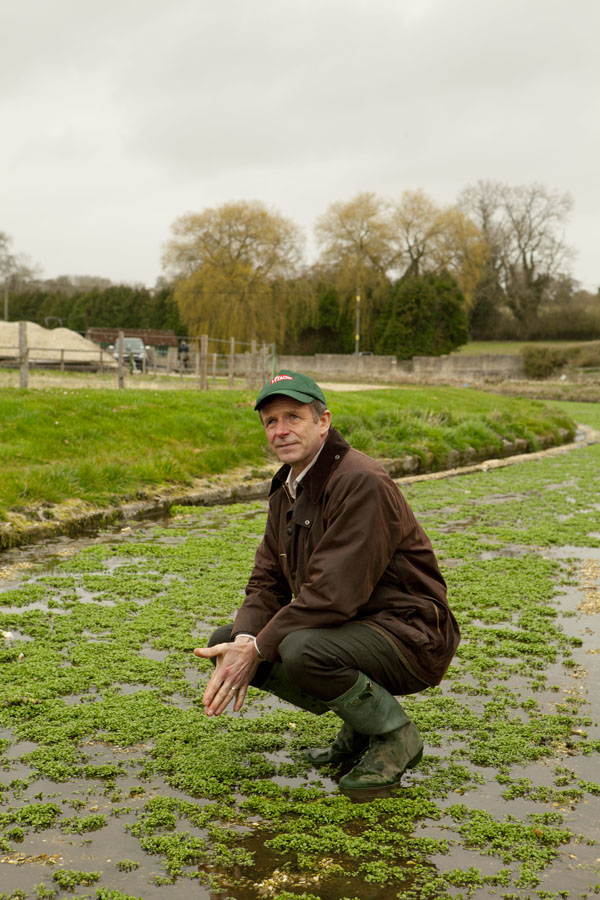
‘British weather is perfect for watercress’ the words of Steve … my host at the watercress farm in Hampshire.
Britain is one of the few countries to grow watercress and has been for hundreds of years. As far back as the 1600’s and most likely even earlier it was foraged in the wild where it grew in streams and rivers but as from 1808 it was first commercially cultivated by William Bradbery, along the River Ebbsfleet in Kent.
The success of the watercress trade is very much entwined with the British railways. In 1865 the ‘Mid-Hants Railway’ or Watercress Line was opened, it connected Alresford to London giving Hampshire watercress growers the opportunity to get their crop fresh to the London markets. The delicate leaves would be picked by hand by the men and tied into bunches by the women to be placed in wicker baskets for the transport.
At London’s Covent Garden watercress would be sold by street vendors who often were children. The bunches of watercress were said to have been formed into posies and eaten like that for breakfast straight away or if you were lucky to be able to afford a loaf, between two slices of bread. In Victorian Britain it was called ‘the poor man’s bread’, it provided the working class with a good portion of nutrition for the day and became one of the first foods for on-the-go.
The Watercress Line declined during the years of the first and second world wars and gave her final blow to watercress growers in the 1960’s with the closure of the line.
Now a flourishing industry, watercress is gaining popularity again and Alresford even has a Watercress festival in may.
We now have Watercress all year round but it used to be a hardy winter crop, feeding off spring water that has a constant temperature of around 10° C, watercress is unaffected by frost.
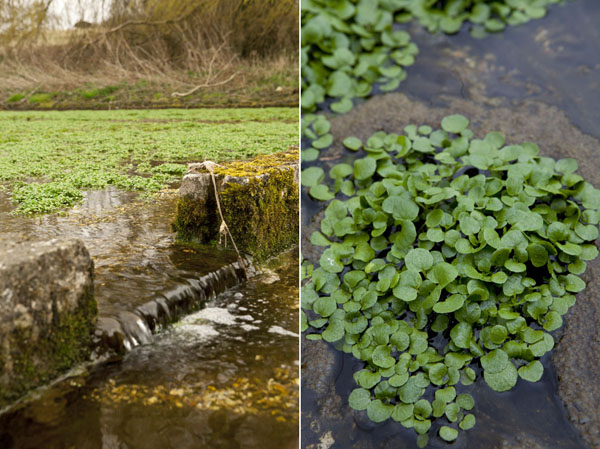 |
| The clear water feeding the cress |
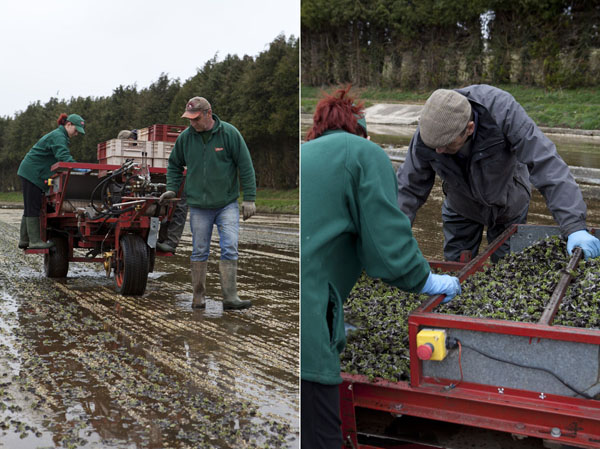 |
| Planting seedlings |
The beds on this Hampshire farm are still the original ones from the 1800’s, they are cleared each year to keep the crop healthy and follow the natural line of the river benefiting of the natural spring water. Hawks and Falcons are used to chase away stealing pigeons and bats are set free to clean the beds of small insects that could affect the health of the crop. They very much work together with nature, preserving the wildlife that likes to reside around watercress and to keep the beds chemical free.
University
students are at the site to study this method as was Steve at one time
in his life. Steve has a PhD in the nutritional physiology of watercress
and his course was part funded by the watercress industry. He tells me watercress contains more vitamin c than oranges, more iron than spinach and more calcium than milk.
He himself swears by eating a few bunches, raw in his hand like the ‘Poor man’s bread’ every day and has done for thirty years.
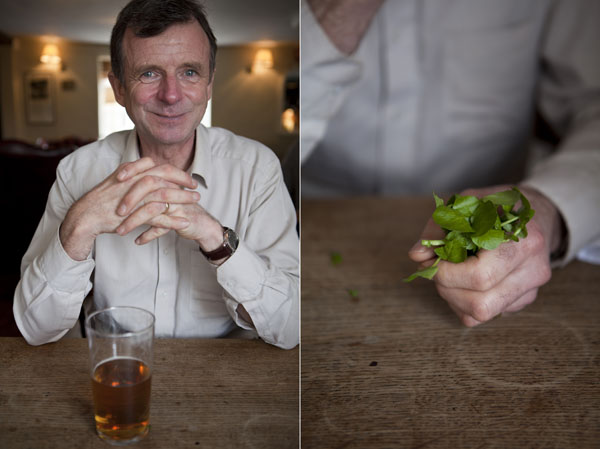 |
| Steve with his ‘Poor man’s bread’ |
The
watercress from Hampshire does taste perfectly peppery filling your
mouth and nose with mustardy warmth and then refreshing it with the
juicy stalks.
It has been a favorite on my plate for quite some time,
preferring it to Rocket salad. It is so versatile, like the ‘poor mans
bread’ straight out of your hand or just plain between two slices of
bread, spicing up your soups, salads and smoothies. I can’t get enough
so with my precious bunches the farm kindly gifted me I had a lovely
salad, a sarnie, an egg and a trout and watercress pie. (check back on friday for the trout and watercress pie)
Watercress from the Watercress Alliance is sold all over the UK in supermarkets and market stalls. Have a play with this brilliantly British crop and I assure you that it’s mustardy bite will not let you go in a hurry.
The Poor man’s bread
What do you need
- British watercress
- bread *optional*
Method
To make a slightly more luxurious ‘poor man’s bread’ adding actual bread, bake a loaf of bread, or buy a decent loaf from a local bakery.
Cut off a couple of slices and wrap in a tea towel.
Pick out a handsome looking, crisp bunch of British watercress at a store or farmstall. Take a walk in the countryside or if you are urban, a park. Search for a perfect spot, in the sun ideally, by a lake or a stream preferably. Have a seat and a breath in deeply, hopefully all you will smell is flowers blossoming and the sweet scent of spring grass. Unpack your slices of bread on you lab and on it place the bunch of watercress, I am not washing it.
Notice the vibrant green color before you take the first bite.
Peppery warmth will fill your nose followed by the sweetness of the bread and then the fresh juiciness of the stalks.
You will wonder why you always over complicate meals when it can be so simple. You will start to think what will go beautifully with this sarnie, some light cream cheese or just a generous spread of fresh farmhouse butter …
From now one watercress will always be on your list, because you can’t get enough.
Enjoy x
You might also like
A farmers life for me – a day at a rare breed pig farm
The post British watercress and the ‘Poor Man’s bread’ appeared first on Miss Foodwise.
]]>The post A farmers life for me. appeared first on Miss Foodwise.
]]>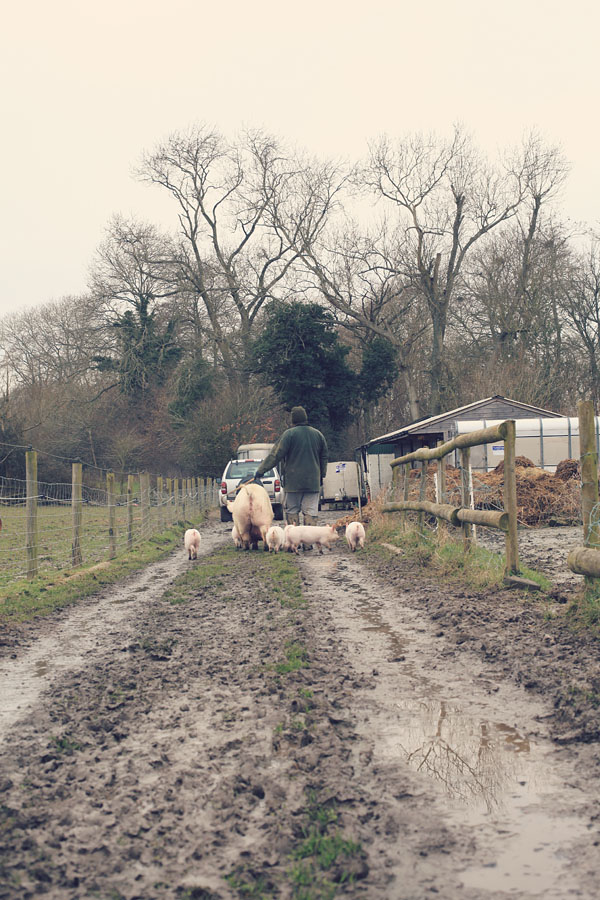
I have a dream… I live in a limestone cottage in rural England that catches the golden color of the sun in its walls and I have a small rare breed pig farm. In my dream I would be getting up early in the morning, jump into my morning clothes, run down the stairs to turn on the fire and slip into my boots to head outside to bring the pigs their breakfast. On my return I will jump in the shower and then do some work on my blog and photography, just after lunch I would check on the pigs again and spend some time with them. Of course pens need to be cleaned and housework needs to be done, but I’m not getting hung up on the less enjoyable things. In the evening I will know that I have yet another day taken care of beautiful creatures, help them give birth, rub their bellies and keep them happy before delivering the best meat to feed a small number of people who respect the work that went into producing this meat. I would have shortened the food chain, I will have made a difference. That is what I want, I keep asking myself ‘what am I doing to make things better’ Sitting behind my desk designing and creating layouts isn’t going to make a difference in the bigger picture of it all. I have the need to do more.
Mahatma Gandhi put my feeling into words perfectly “You must be the change you wish to see in the world.”
So a few weeks ago I went on a rare/native breed pig keeping course in West-Sussex, because you have to start somewhere …
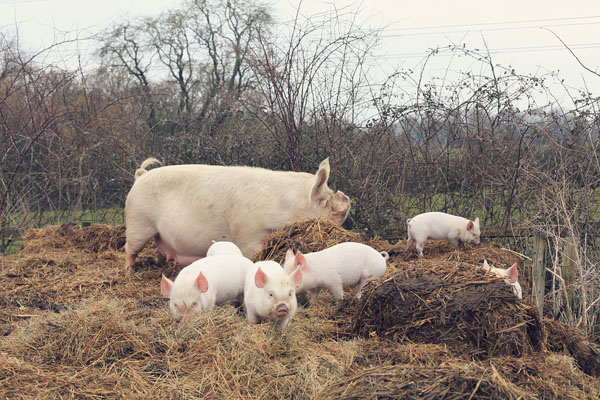 |
| Middle Whites, one of the rarest British breeds. |
It was a freezing day, my cloths as it appears aren’t nearly warm enough to be running around on a farm all day. My pretty red wellies are too small for thick woolen socks or even a triple pair to keep my feet from turning into ice cubes.
Luckily I had a lot of excitement keeping me warm, the cold didn’t bother me at all.
The day started by waking up the pigs and giving them their first feed, we walked up the field where the paddocks were divided by gender, breed and age. The pigs were eager to tuck in and it became instantly clear they have a pecking order, if you aren’t careful to keep an eye out when you feed them, one pig would be very a very happy bunny and the others would go hungry. Every pig reacted to his or her name when called out, a lovely sight to behold and it shows how clever these animals are.
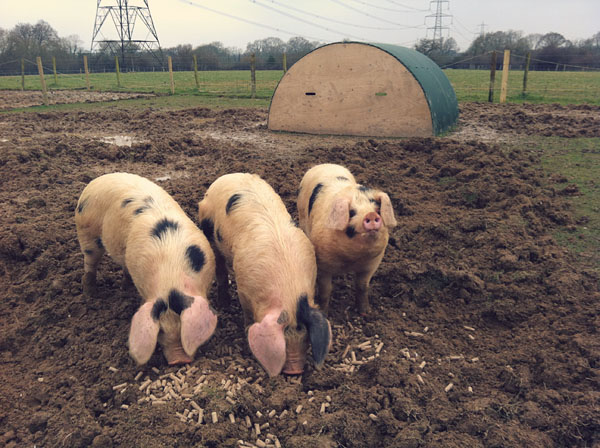 |
| Gloucester Old Spots |
The severe rainfall and cold climate this year has made for muddy conditions at the farm, fortunately pigs are happiest rolling and playing in piles of mud. They will eat the mud as it is their primary source of iron. Piglets who aren’t able to go out in these wet conditions in fear of drowning are given a nice fresh pile of mud in their pen to roll in and eat every day so they don’t become anemic. When they are a week or two older, they are let out to have a play under the watchful eye of Neil and his son Oliver who is going to train to be a vet.
Michaela told us that they know when a sow is going to give birth as she will start to create an elaborate nest with straw, twigs and sometimes even flowers. At times the nest will have some things in it that she will remove, like larger branches that could possibly hurt the sow or one of the piglets but when she does the sow will show her disapproval by loud sighs on which the pig will take the branch back and place it in the nest again.
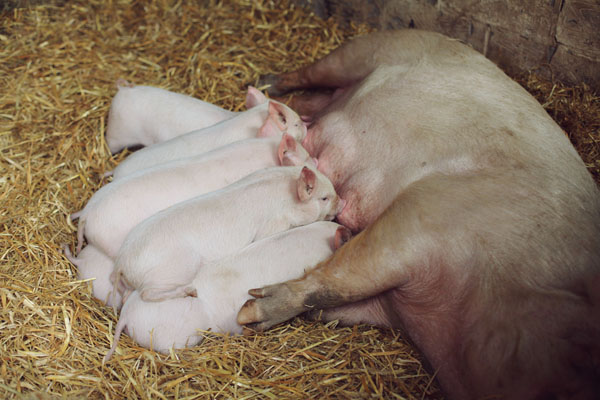 |
| Sally the Middle White, and her babies. |
After we had a nice cuppa and a delicious moist piece of lemon drizzle cake we sat down to defrost our hands and feet and to talk about the legal things involved in starting your smallholding, which breed of pigs to keep, and how to keep your animals healthy. I’m not going to go into detail about this, you will have to go on a course if you want to know all the rules and regulations but I can say it is all very doable.
When we went outside again we were going to learn about measuring your animals to see when they are right for their final stop, the slaughterhouse. It is the less enjoyable part of being a farmer or smallholder when you care for your animals deeply, but a necessary step to preserve rare/native breed lines and keep livestocks healthy. Of course their pedigree breeding pigs don’t go to slaughter for a very long time, they have names, witty ways and are loved almost like pets.
The time has come to weigh piglets of different ages and learn how to pick them up and handle them with care so you don’t disturb the small creatures.
Upside down seems to be the way – though not for a long time of course – before slowly turning them to hold them in the much favourited ‘baby position’. I can’t tell you how much I was looking forward to holding a piglet, suddenly I’m 8 again and happy as a child. The Saddleback didn’t seem to enjoy it very much so we got him back with his mum but the Middle white baby, a few weeks older than the Saddleback didn’t seem to mind very much. They had to ask me to give him back or I would have remained standing there until the little one would start screaming for his big mum. Reluctantly I handed over the piglet.
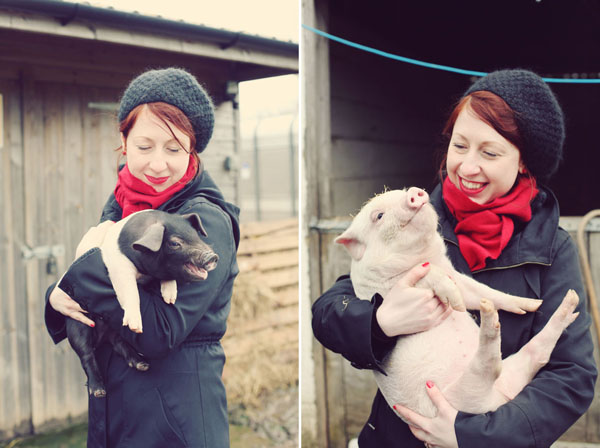 Michaela had prepared a gammon and slow cooked pork for our lunch, I felt very humble to share this with them, the meat from their precious Saddleback pigs. Such a treat, I never tasted pork full of flavour and succulent like this in my whole life. I paired the meat with apple sauce and British watercress she had prepared – oh heaven. Michaela however trying to convince me she isn’t a cook just served me one of the best meals I ever had. I do adore uncomplicated simple food with big natural flavours.
Michaela had prepared a gammon and slow cooked pork for our lunch, I felt very humble to share this with them, the meat from their precious Saddleback pigs. Such a treat, I never tasted pork full of flavour and succulent like this in my whole life. I paired the meat with apple sauce and British watercress she had prepared – oh heaven. Michaela however trying to convince me she isn’t a cook just served me one of the best meals I ever had. I do adore uncomplicated simple food with big natural flavours.
One of the most moving things I encountered was the way Michaela and Neil were proud to share their food with us, proud of the hard work they put in -next to their jobs- to care for animals.
After the much enjoyed lunch we went back to the pigs for some serious exercise with ‘stick and board training’.
I ran after a giant Saddleback pig for almost half an hour, I
wasn’t giving up. Using a curly walking stick and a board, I was learning
how to guide a pig to a direction I want rather than the direction the
pig wants to run to. I admit, most of the time the sow was walking me
and I was convincing myself I was guiding her resulting in me running
after her trying to catch up …
But in the end I think it started to
work, I got her to her pen, back out again and back in again. I felt a
feeling of pride – I had done it – but was still not sure I had actually
pulled it off. I asked Neil if there was any hope for
me and he told me that a first day is always tough but that I had
perseverance … you got that right, I don’t give up.
I ended my stick
and board training with a session of hugging Molly the sow, petting her
and rubbing her back and belly while telling her what a good girl she
was. I really got into it – in a big way. These animals welcome a nice
rubbing, they love it when you make a fuss. They are such playful
creatures, running after each other and into each other -some breeds
like Saddlebacks and Old spots don’t see very well with their ears
covering most of their eyes –
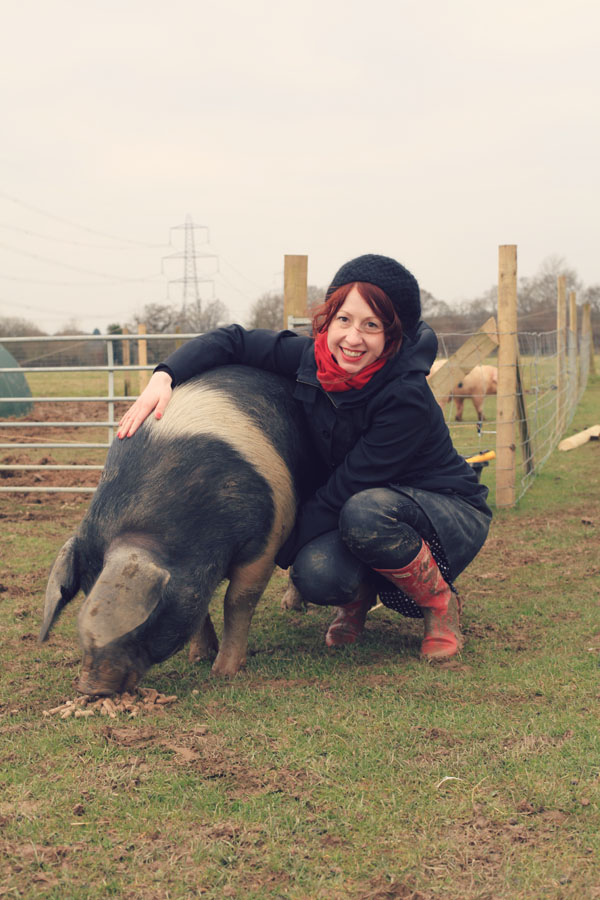 |
| Me and Molly, the friendly Saddleback. |
My
wrists, back and shoulders were sore… I had healthy rosy cheeks from
the exercise and my heart was glowing with happiness. A farmers life is a hard one, but they will always tell you it’s worth it. If you spend time with the animals you see why. Pigs really are the most amazing creatures. If only …
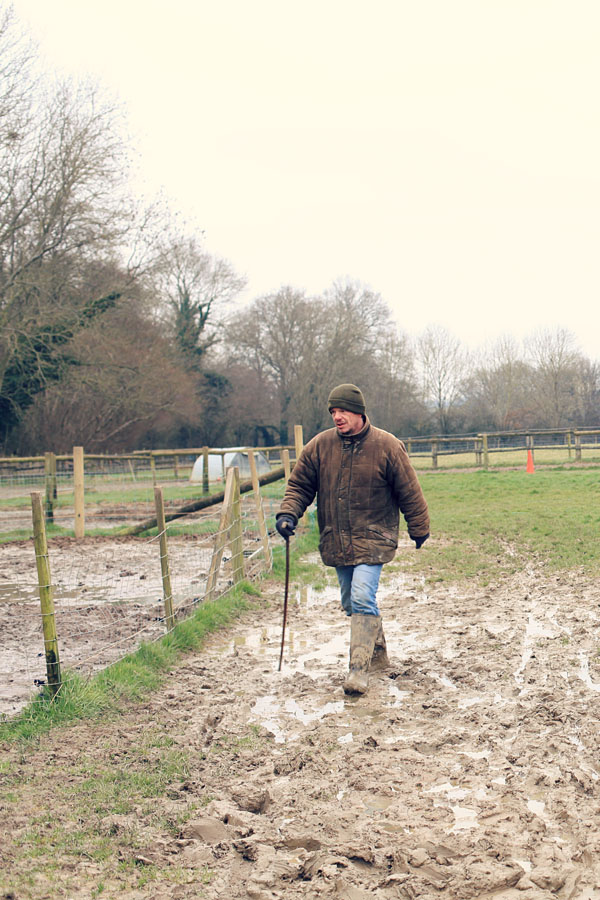 |
| The watchful eye of Neil. |
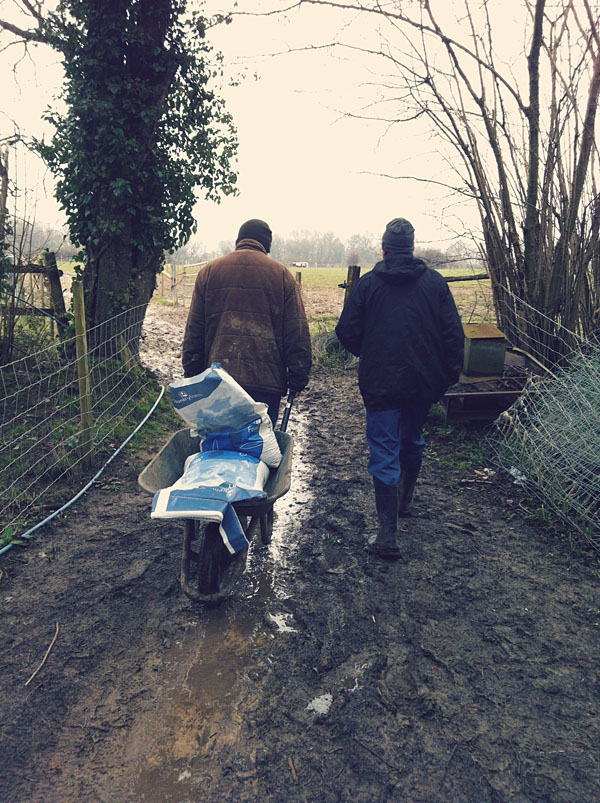 |
| Going to feed the pigs. |
Are you interested in taking a pig keeping course? I did mine at Tedfold Farm in West Sussex, a farm where all animals are are slowly reared at their own pace and with lots and lots of love. Thank you to all at Tedfold Farm for a wonderful day.
I entered this course at my own expense.
The post A farmers life for me. appeared first on Miss Foodwise.
]]>